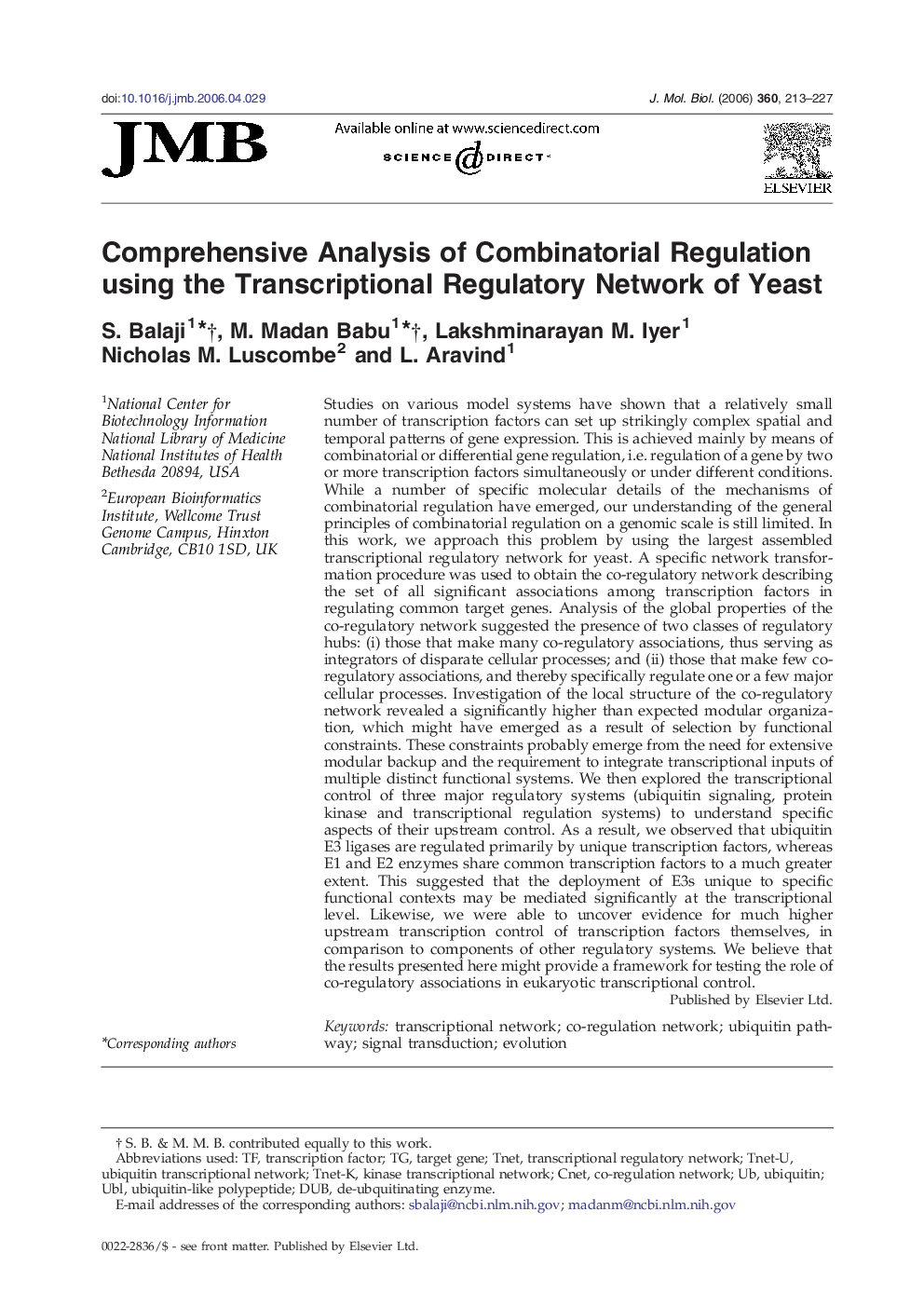| کد مقاله | کد نشریه | سال انتشار | مقاله انگلیسی | نسخه تمام متن |
|---|---|---|---|---|
| 2189592 | 1096216 | 2006 | 15 صفحه PDF | دانلود رایگان |

Studies on various model systems have shown that a relatively small number of transcription factors can set up strikingly complex spatial and temporal patterns of gene expression. This is achieved mainly by means of combinatorial or differential gene regulation, i.e. regulation of a gene by two or more transcription factors simultaneously or under different conditions. While a number of specific molecular details of the mechanisms of combinatorial regulation have emerged, our understanding of the general principles of combinatorial regulation on a genomic scale is still limited. In this work, we approach this problem by using the largest assembled transcriptional regulatory network for yeast. A specific network transformation procedure was used to obtain the co-regulatory network describing the set of all significant associations among transcription factors in regulating common target genes. Analysis of the global properties of the co-regulatory network suggested the presence of two classes of regulatory hubs: (i) those that make many co-regulatory associations, thus serving as integrators of disparate cellular processes; and (ii) those that make few co-regulatory associations, and thereby specifically regulate one or a few major cellular processes. Investigation of the local structure of the co-regulatory network revealed a significantly higher than expected modular organization, which might have emerged as a result of selection by functional constraints. These constraints probably emerge from the need for extensive modular backup and the requirement to integrate transcriptional inputs of multiple distinct functional systems. We then explored the transcriptional control of three major regulatory systems (ubiquitin signaling, protein kinase and transcriptional regulation systems) to understand specific aspects of their upstream control. As a result, we observed that ubiquitin E3 ligases are regulated primarily by unique transcription factors, whereas E1 and E2 enzymes share common transcription factors to a much greater extent. This suggested that the deployment of E3s unique to specific functional contexts may be mediated significantly at the transcriptional level. Likewise, we were able to uncover evidence for much higher upstream transcription control of transcription factors themselves, in comparison to components of other regulatory systems. We believe that the results presented here might provide a framework for testing the role of co-regulatory associations in eukaryotic transcriptional control.
Journal: Journal of Molecular Biology - Volume 360, Issue 1, 30 June 2006, Pages 213–227